 W
WThe Australian sawtail catshark is a common species of catshark, and part of the family Scyliorhinidae, endemic to southern Australian waters. It is found on or near the bottom of the outer continental shelf and upper continental slope, at depths of 85 to 823 m. This slim-bodied species is characterized by crests of enlarged dermal denticles along both the dorsal and ventral edges of its caudal fin and caudal peduncle, along with a color pattern of broad, dark saddles outlined in white. It can grow to 61 cm (24 in) in length. The Australian sawtail catshark feeds mainly on fishes, crustaceans, and cephalopods. Females are oviparous and lay eggs enclosed by capsules. This species is often caught incidentally by commercial bottom trawl fisheries, but is not significantly threatened by fishing activity. Thus, it has been assessed as of Least Concern by the International Union for Conservation of Nature (IUCN).
 W
WThe Barrier Reef chromis, also known as the yellowback puller or shining puller, is a species of damselfish in the family Pomacentridae native to the east coast of Australia. It is a small fish with a yellowish-brown dorsal surface separated by a dark stripe from its silvery flanks and underside.
 W
WBullockia maldonadoi is a species of catfish of the family Trichomycteridae, and the only species of the genus Bullockia. This fish grows to about 7 centimetres (2.8 in) and originates from Chile.
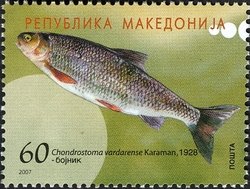 W
WChondrostoma vardarense is a species of ray-finned fish in the family Cyprinidae. It is found in Bulgaria, Greece, North Macedonia, and Turkey. Its natural habitat is rivers. It is threatened by habitat loss.
 W
WChromis lineata is a Chromis from the Indo-Pacific. It occasionally makes its way into the aquarium trade. It grows to a size of 7 cm in length.
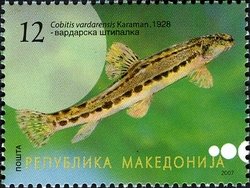 W
WCobitis vardarensis is a species of ray-finned fish in the family Cobitidae.
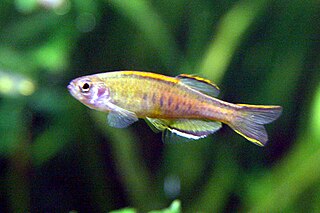 W
WThe glowlight danio is a small, schooling fish closely related to the popular zebrafish Danio rerio. This should not be confused with the GloFish, a trademarked brand of fluorescent zebrafish that appear to glow in the dark under ultraviolet light. Danio choprae is an active danionin species that spends most of its time on mid-water levels. This species feeds on insects that have fallen into the water, aquatic insect larvae, and other small animals. In the aquarium, it accepts most foods offered, including most dry foods. It has a streamlined body marked with a brilliant orange longitudinal band and a series of vertical blue-black bars on the flanks. The fins are edged with yellow. In recent years, it has become quite widely traded as an aquarium fish, but otherwise has no commercial importance. Its common name derives from its similarity to the glowlight tetra, a South American characin only distantly related to this fish. They get on well with all other Danio species except the giant danio.
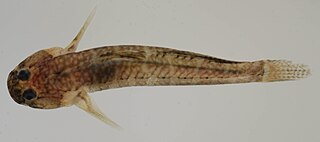 W
WThe seaboard goby is a species of fish belonging to the family Gobiidae.
 W
WHucho ishikawae, the Korean taimen, is a species of salmonid fish found in the border region between North Korea and China, including the Am-nok, Dok-ro, Weon-ju and Jang-jin Rivers. Monitoring of the species has been made very difficult because of the lack of access to the areas in which this species occurs and consequently it is rated as data deficient by the IUCN. It is found in flowing water and reaches up to 50 cm (20 in) in length.
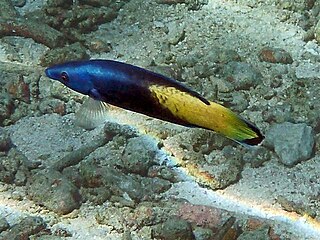 W
WLabroides bicolor is a species of wrasse endemic to the Indo-Pacific, Indian Ocean and Pacific Ocean and is known by various names including bicolor cleanerfish, bicolor cleaner wrasse, bicolored cleaner wrasse, bicolour cleaner wrasse, cleaner wrasse, two-colour cleaner wrasse and yellow diesel wrasse.
 W
WLestidium atlanticum, the Atlantic barracudina, is a species of fish. It is widely distributed in tropical and subtropical waters of the three major oceans.
 W
WMyctophum obtusirostre, the bluntsnout lanternfish, is a species of lanternfish.
 W
WMyctophum selenops, the Wisner's lanternfish, is a species of lanternfish.
 W
WNeoglyphidodon thoracotaeniatus is a species of damselfish in the family Pomacentridae. It is found in the Indo-Pacific mainly in the Pacific Ocean. Adults can grow up to 13.5 centimetres (5.3 in). It is found in the aquarium trade.
 W
WPachypanchax sakaramyi is a species of Aplocheilid killifish endemic to Madagascar where it is only known from Sakaramy and Antongombato Rivers with reports that it is found in several crater lakes. Its natural habitats are rivers and freshwater lakes. It is threatened by habitat loss and invasive species.
 W
WPercilia irwini is a species of perch-like fish in the family Perciliidae found only in the Malleco and Bio-Bio River basins in Chile.
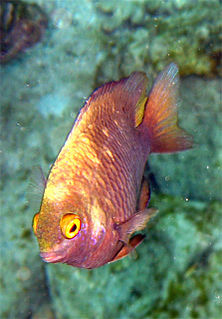 W
WPomacentrus smithi, Smith's damselfish, is a species of damselfish from the family Pomacentridae which is found in the Western Central Pacific. It occasionally makes its way into the aquarium trade. It grows to a size of 7 cm in length. The specific name honours the American ichthyologist Hugh McCormick Smith (1865-1941).
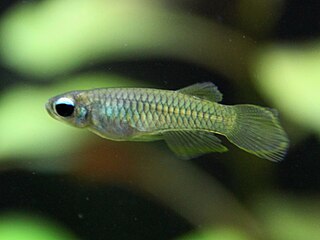 W
WPoropanchax normani, known as the Norman's lampeye, is a species of killifish native to Africa.
 W
WThe prickly shark is one of the two species of sharks in the family Echinorhinidae, found in the Pacific Ocean over continental and insular shelves and slopes, and in submarine canyons. Bottom-dwelling in nature, it generally inhabits cool waters 100–650 m (330–2,130 ft) deep, but it also frequently enters shallower water in areas such as Monterey Bay off California. This stocky, dark-colored shark grows up to 4.0 m (13.1 ft) long, with two small dorsal fins positioned far back on its body and no anal fin. It is characterized by a dense covering of thorn-like dermal denticles, hence its common name.
 W
WPseudocrenilabrus nicholsi is a species of cichlid native to the Congo Basin in Africa. As other members of the genus Pseudocrenilabrus, it is a mouthbrooder. This species can reach a length of 8.5 centimetres (3.3 in) SL. The specific name honours the American ichthyologist John Treadwell Nichols (1883-1958) who was curator of fishes at the American Museum of Natural History. Nichols originally described this species as Paratilapia ventralis in 1928 but this name had already been used by George Albert Boulenger for another species of cichlid in 1898.
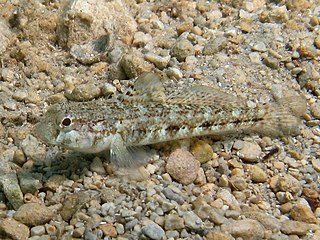 W
WGobius roulei, Roule's goby, is a species of goby native to the eastern Atlantic Ocean and the Mediterranean Sea where it can be found at depths of from 320 to 385 metres. This species can reach a length of 8 centimetres (3.1 in) TL. The specific name honours the French zoologist Louis Roule (1861-1942) who was the collector of the type.
 W
WThe southern stingray is a whiptail stingray found in tropical and subtropical waters of the Western Atlantic Ocean from New Jersey to southern Brazil. It has a flat, diamond-shaped disc, with a mud brown, olive, and grey dorsal surface and white underbelly. The barb on its tail is serrated and covered in a venomous mucus, used for self-defense.
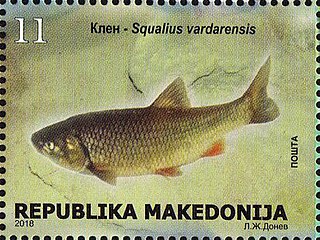 W
WSqualius vardarensis is a species of ray-finned fish in the family Cyprinidae. It is found in the Sperchios to Vardar drainages in Greece and Macedonia.
 W
WThymallus yaluensis is a putative species of freshwater fish, a grayling in the salmon family Salmonidae. It is endemic to the upper Yalu River in Korea, on the Chinese border.